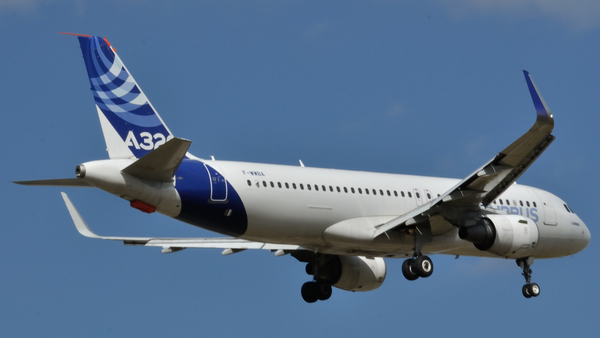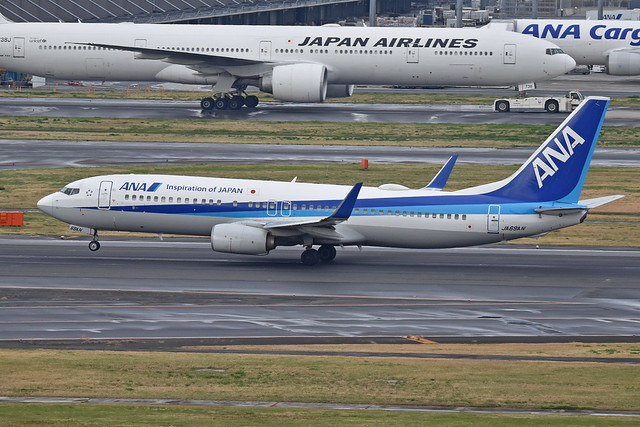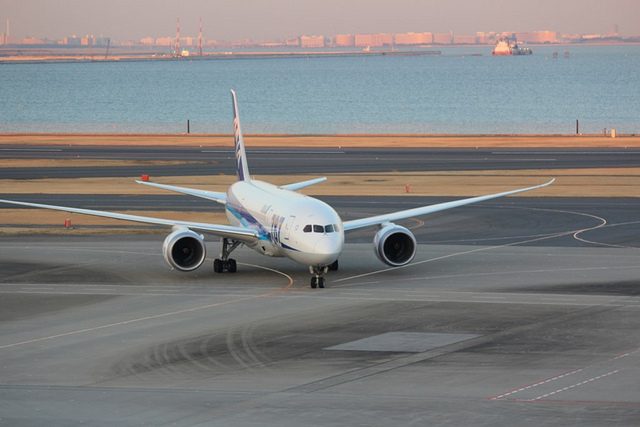Orange2Fly A320 at Pristina on Dec 2nd 2017, severe hard landing at 3.04G
Last Update: January 18, 2019 / 18:22:08 GMT/Zulu time
Incident Facts
Date of incident
Dec 1, 2017
Classification
Incident
Airline
Orange2Fly
Flight number
OTF-3564
Departure
Basel/Mulhouse, France
Destination
Pristina, Kosovo
Aircraft Registration
SX-ORG
Aircraft Type
Airbus A320
ICAO Type Designator
A320
Kosovo's AIB reported: "A hard landing was executed at PRN Rwy 35 VORP based on the load report ." The aircraft sustained unknown damage, the occurrence was rated a serious incident and is being investigated.
The occurrence aircraft remained on the ground for 13 hours, then returned to service.
No instrument approaches are published for Pristina's runway 35 (only for runway 17) by the relevant authorities Serbia and Montenegro or Kosovo via Eurocontrol. AIP Serbia and Montenegro released a prescribed track visual circling chart, aerodrome LYPR/Pristina, however (see below). Kosovo's AIP have not yet released any charts for the aerodrome BKPR/Pristina.
A reader made The Aviation Herald aware however, that a VOR-DME-P approach to runway 35 does (or did) exist and sent the Jeppesen plates dated 2011 (editorial note: we can not publish those plates due to explicit statement by Jeppesen denying a license to use their plates for editorial coverage when we inquired for a license).
Another reader pointed out the charts for Kosovo are not available on the Eurocontrol but on the AIP Kosovo Website. The VOR/DME P Approach runway 35 plate by the AIP Kosovo is now included below.
Kosovo's Aeronautical Accident and Incident Investigation Commission (KAAIIC) released their final report (Editorial note: the English version of the report starts at page 56 of 160 pasges) concluding the probable causes of the severe hard landing were:
Contributing Factors
- The maneuvers of the PF on the stick seconds before touchdown. There were several nose up and nose down inputs at very low height.
- A late full back stick applied by the PF at 20ft/RA. This action was too late to change the vertical descent rate, so the hard landing was unavoidable at this point.
- The weather circumstances during that night were contributing factors to this occurrence, it was snowing and the runway was wet.
- Decision of the flight crew to have a Positive Landing resulted in an increased rate of descent
- Touchdown occurred with a high rate of descent (880 ft/min) as a result the Severe Hard Landing occurred.
- The left side window of the PF was foggy and was out of order because the heating was not working and the captain had reduced peripheral view. This malfunction was an MEL item, was inoperative and was out of order, the flight crew were in aware of it.
Findings as to Risk
- The flight crew failed to obtain the task written in the AMM 05-51-11-200-004 regarding that the flight crew are responsible to make a report if they think that there was a hard/overweight landing.
- Missing printer paper in the DMU was an MEL item, but also crucial for printing the Load report and confirming the landing parameters.
- The aircraft continued to fly 8 more sectors without any inspection which might lead to compromising the safety of flight operations.
The KAAIIC reported the captain (ATPL, 10,078 hours total, 688 hours on type) was pilot flying, but had a problem with his sliding window, the heating of which had been inoperative in accordance with minimum equipment list requirements and thus was fogged up so that the captain had almost no peripheral view. The first officer (ATPL, 7356 hours total, 406 hours on type) was pilot monitoring.
The crew prepared for a full flaps approach to Pristina's runway 35 via the VOR/DME P procedure. At 2000 feet AGL the captain disengaged the autopilot, but left autothrust active. At 3nm the crew became visual with the runway and descended through 1000 feet AGL, the first officer called a stable approach - all parameters of the approach were within stabilized criteria. The remainder of the final approach was also considered stabilized.
The crew had agreed to perform a "Positive Landing" due to the weather conditions (snow).
The KAAIIC reported:
The crew reported they did not feel any abnormality during the landing and everything seemed normal. The flight crew also did a post landing briefing and discussed the landing and both agreed that the landing was not “unusual landing” because of the Positive Landing. There were no fault messages from the ECAM (Electronic Centralized Aircraft Monitor) and the FMGS (Flight Management Guidance System), as per system intent. The automatic print out of the LOAD report did not occur due to missing paper in the DMU (Data Management Unit), and the flight crew were in knowledge about this fact (MEL items 31-30-07 A).
There were no actions taken by the PF regarding the landing, there was a post landing discussion between the flight crew and the cabin crew about the landing and the PF stated that the landing was a little bit hard but within the limits. No recordings were taken into the aircraft technical log book by the PF.
The aircraft continued to fly 8 more sectors to the destination Basel Mulhouse and back to Pristina. Two days after the hard landing the co-pilot had a private talk with the Training Manager of the Operator regarding the night of the incident because he was doubtful about that landing and after the conversation, immediate actions were taken to load paper in the DMU. On date 05.12.2017 the DMU was filled with paper and generated LOAD report and the parameters shown on the report were that VRTA (vertical acceleration) was 3.04 G.
The data had exceeded the limit given by the Airbus AMM and the aircraft was declared AOG and grounded for further checks on 6th of December. On 15th of December the Airbus provided the special permission to fly to Craiova, Romania MRO, following detailed inspections. All inspections were completed before permanent release and all four Main Landing Gear wheels and the RH shock absorber assembly were replaced.
The KAAIIC analysed:
From the moment the AP was disengaged at around 2000 ft the aircraft was in landing configuration and was handled by PF. Both FD’s and Final app mode were disengaged as a consequence of VOR DME 35 Missed Approach Point.
At 500 ft the right turn started so the aircraft to be aligned with the runway. The PF aligned the aircraft with runway axis, consequently the roll angle was increased up to +10°, before being reduced.
The Digital Flight Data Recorder (DFDR) showed that seconds after crossing 500 ft the aircraft made unusual nose up and nose down orders. The pitch angle increased from +2° to +6° (nose up) and the rate of descent decreased from 770 ft/min to 200 ft/min.
Three significant forward stick inputs applied by PF in the continuation, these orders decreased the pitch angle from +6° to +2° and the rate of descent increased from 200 ft/min to 880 ft/min.
At 20 ft RA the PF applied a full back stick input which lead to increasing the pitch angle from +2° to +3.5° and increase of vertical load factor from + 0.96 G to +1.05 G.
This pitch-control input was applied at very low altitude and the vertical speed did not decrease sufficiently, remaining at 880 ft/min. The aircraft touched down at 3.04 G which is considered to be a “Severe Hard Landing.
With respect to the hard landing report the KAAIIC analysed:
The aircraft continued to fly on 8 more sectors after the hard landing occurred, on 6th of December the aircraft was declared AOG (Aircraft on the Ground). The heavy landing reporting is crucial for taking actions to ensure that the aircraft remains functional and in airworthiness condition. According to manufacturer manual where it states that reporting of high load events must come from the pilot’s experience and awareness as first detection. It is the responsibility of every pilot to report high load occurrence by entering it the logbook. This will initiate further actions for maintenance checks and inspections. If the pilots are doubtful about the landing, they can request a print of Load . The Load report is generated automatically or manually by request of the pilots.
In our case there was no automatically print out of Load report due to missing paper in the DMU printer.
Metars:
BKPR 020110Z 34005KT 5000 -SN BR SCT009 OVC025 00/M01 Q1011 RMK 17290095=
BKPR 020101Z VRB03KT 3000 SN SCT009 OVC025 00/M01 Q1011 RMK 17290095=
BKPR 020100Z VRB03KT 5000 -SN BR SCT010 OVC030 01/M01 Q1011 NOSIG RMK 17290095=
BKPR 020030Z VRB02KT 6000 -SN SCT010 OVC030 00/M01 Q1011 NOSIG RMK 17290095=
BKPR 020000Z VRB03KT 4000 -SN BR SCT009 OVC025 00/M01 Q1011 NOSIG RMK 17290095=
BKPR 012330Z 34006KT 4000 -SHSN BR SCT010 OVC025 01/M01 Q1011 NOSIG RMK 17290095=
BKPR 012300Z 32006KT 5000 -SN BR SCT010 OVC025 01/M01 Q1011 NOSIG RMK 17290095=
BKPR 012230Z 33007KT 8000 -RASN SCT014 BKN040 02/M00 Q1011 NOSIG RMK 17290095=
BKPR 012200Z 32006KT 8000 -RASN SCT012 OVC030 02/M00 Q1011 NOSIG RMK 17290095=
BKPR 012130Z 34004KT 8000 -RA SCT012 OVC030 02/M00 Q1010 NOSIG RMK 17290095=
BKPR 012100Z 36006KT 9999 -RA SCT014 BKN030 02/M00 Q1010 NOSIG RMK 17290095=
BKPR 012030Z 35007KT 9999 -RA SCT015 BKN030 02/M00 Q1011 NOSIG RMK 17290095=
BKPR 012000Z 34007KT 8000 -RA SCT015 BKN030 02/M00 Q1011 NOSIG RMK 17290095=
BKPR 011930Z 33009KT 7000 -RA SCT015 OVC030 02/M00 Q1011 NOSIG RMK 17290095=
BKPR 011900Z 33011KT 7000 RA SCT015 OVC025 03/00 Q1011 NOSIG RMK 17290095=
Incident Facts
Date of incident
Dec 1, 2017
Classification
Incident
Airline
Orange2Fly
Flight number
OTF-3564
Departure
Basel/Mulhouse, France
Destination
Pristina, Kosovo
Aircraft Registration
SX-ORG
Aircraft Type
Airbus A320
ICAO Type Designator
A320
This article is published under license from Avherald.com. © of text by Avherald.com.
Article source
You can read 2 more free articles without a subscription.
Subscribe now and continue reading without any limits!
Read unlimited articles and receive our daily update briefing. Gain better insights into what is happening in commercial aviation safety.
Send tip
Support AeroInside by sending a small tip amount.
Related articles
Smartwings A320 at Bourgas on Jul 18th 2017, runway excursion on landing due to hydraulic failure after touchdown
A Smartwings Airbus A320-200, registration SX-ORG performing flight QS-1482 from Brno (Czech Republic) to Bourgas (Bulgaria) with 178 passengers and…
Orange2fly A320 at Pristina on Dec 1st 2017, severe hard landing at 3.04G, aircraft flew 8 more sectors
An Orange2fly Airbus A320-200, registration SX-ORG performing flight O4-3564 from Basel/Mulhouse (Switzerland/France) to Pristina (Kosovo) with 178…
Orange2fly A320 at Muscat on Jan 28th 2019, Alpha Floor on approach at 210 feet AGL
An Orange2fly Airbus A320-200 on behalf of SalamAir, registration SX-ODS performing flight OV-104 from Dubai (United Arab Emirates) to Muscat (Oman),…
Newest articles
ANA B738 at Yonago on Apr 7th 2024, GPWS saves the day
An ANA All Nippon Airways Boeing 737-800, registration JA69AN performing flight NH-389 from Tokyo Haneda to Yonago (Japan), was on a circling…
ANA B788 at Sapporo on Apr 24th 2024, hydraulic leak after landing
An ANA All Nippon Airways Boeing 787-8, registration JA804A performing flight NH-71 from Tokyo Haneda to Sapporo Chitose (Japan) with 213 people on…
Subscribe today
Are you researching aviation incidents? Get access to AeroInside Insights, unlimited read access and receive the daily newsletter.
Pick your plan and subscribePartner

A new way to document and demonstrate airworthiness compliance and aircraft value. Find out more.

ELITE Simulation Solutions is a leading global provider of Flight Simulation Training Devices, IFR training software as well as flight controls and related services. Find out more.

Your regulation partner, specialists in aviation safety and compliance; providing training, auditing, and consultancy services. Find out more.
AeroInside Blog
Popular aircraft
Airbus A320Boeing 737-800
Boeing 737-800 MAX
Popular airlines
American AirlinesUnited
Delta
Air Canada
Lufthansa
British Airways



